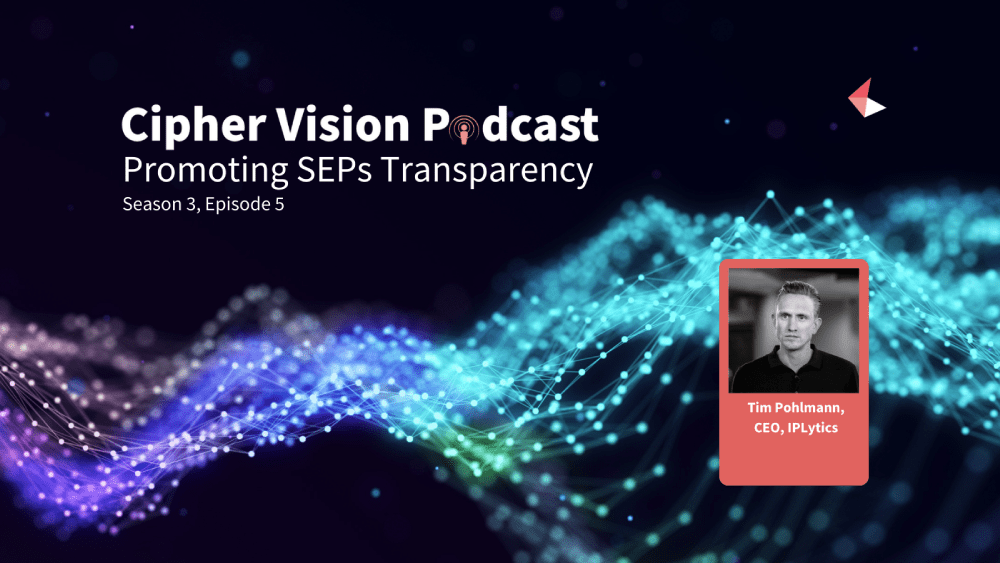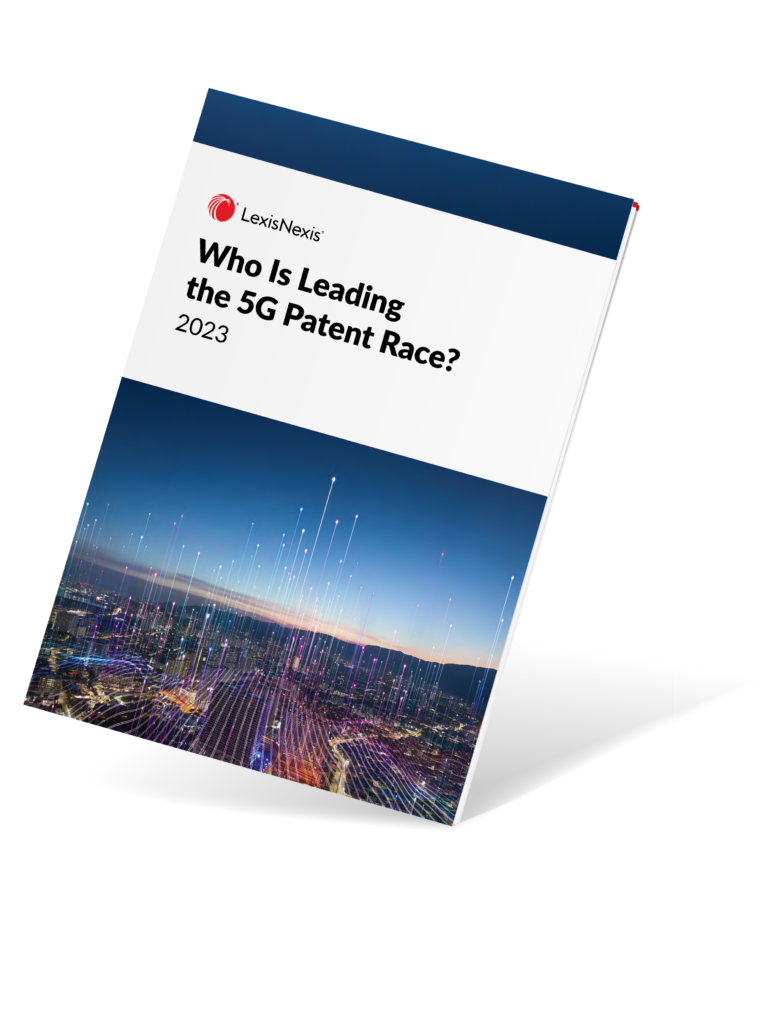Promoting SEPs Transparency

Introduction
Episode 5 in Season 3 of the Cipher Vision Podcast series features Tim Pohlmann, CEO, LexisNexis IPlytics.
He joins us to discuss the world of SEPs, from conflict areas to new opportunities, sharing the benefits of clarity and drawing on high-quality data.
He chats to the hosts of the Cipher Vision podcast, who are:
- Francesca Levoir, Head of Marketing, LexisNexis Cipher
- Nigel Swycher, CEO, LexisNexis Cipher
Conversation Highlights
How would you describe what SEPs are?
A standard essential patent is a patent that claims an invention that reads on a technical standard.
If you implement a standard, let’s say, 4G, or 5G in a telephone, that is using certain technology that has been patented, and you’re implementing those patents as well.
Why does it get a little bit complicated?
When you own a patent, you have exclusivity rights.
When you are joining the standards developing organization, you’re basically saying, ‘I commit to licence my patents, I’m losing my exclusivity’.
The royalty you can ask for the licence is capped, it has to be FRAND (Fair, Reasonable and Non-Discriminatory).
The big question now is what is a reasonable grant rate?
On the scale of SEPs
What is particular about SEPs is that there’s so much licensing going on.
The latest numbers show over $20 billion yearly licensing around SEPs. So it’s a lucrative and big market. And that’s why there’s so much at stake.
The need for transparency in the space
Companies must declare patents that are potentially central to the standardization bodies. That’s good, it’s good to have databases to get started. But there’s no third party who makes any assessment if these patents are essential.
If you look at certain studies, it says that 10/ 20, maybe 30% of these are only essential, so the majority are not essential.
What we do at LexisNexis IPlytics is we have intelligent ways to cross-correlate patent data with standards data.

Get a unique overview of the 5G patent landscape
Discover invaluable insights for forward-thinking businesses eager to embrace 5G technology. Download your copy now.



